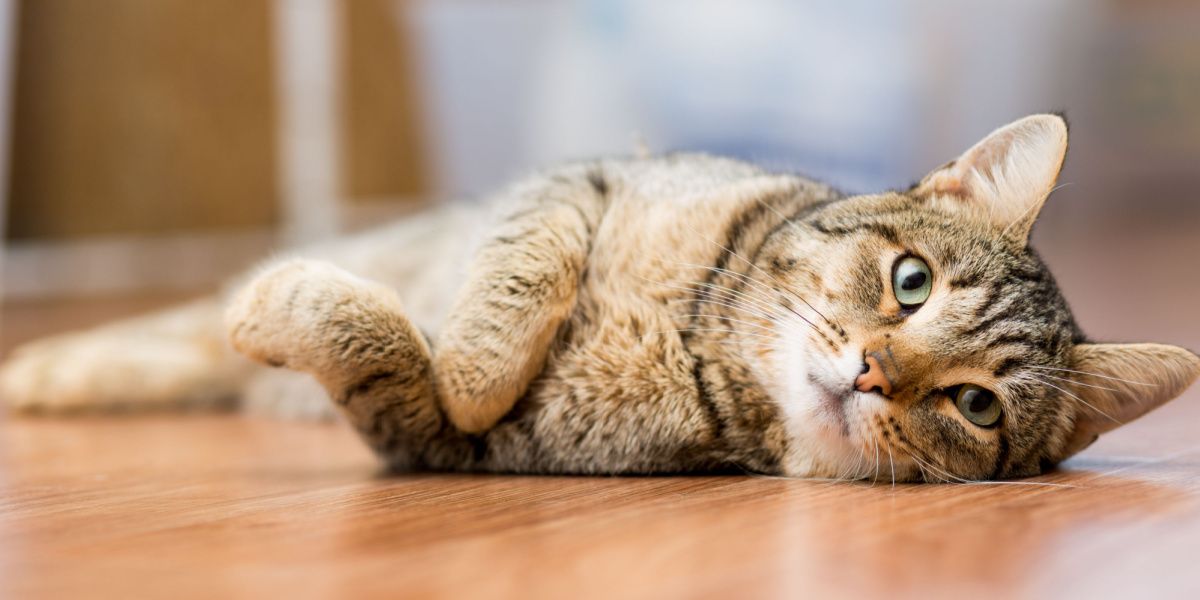
When someone says the word “tabby,” it’s clear they’re talking about cats. It’s a common mistake, however, to use this word to identify a specific cat breed or cats in general. It’s true that many tabby cats can look alike, but the term tabby refers to a cat’s coat pattern and has nothing to do with breed.
Identifying a tabby pattern starts with understanding what a tabby actually is and knowing the different ways those genes affect coat patterns.
The tabby pattern is the most common pattern seen in domestic cats. There are five different tabby distinguished by the way stripes, swirls, and spots appear. The original and most common tabby coat pattern is mackerel, which is the natural coat pattern of the African wildcat, the ancestor to domestic cats.Key Takeaways
Facts About the Tabby Pattern
If you want to get technical, all cats possess the gene for tabby markings. This doesn’t, however, make every cat a tabby cat. Some cats have other genes that mask, or color over, the tabby characteristics. Tabby it is the most common coat pattern among domestic cat breeds as well as mixed breeds.
How to Identify a Tabby Cat
You can start identifying a tabby by looking at the cat’s face. All tabby cats have a distinctive “M” marking on their forehead. Legend says this letter stands for Mau, the ancient Egyptian word for “cat.” Others claim the “M” stands for Mohammed or the Virgin Mary. In addition to the classic “M” marking, tabbies also have thin stripes on their faces and markings around their eyes.
Without pulling out the punnet squares we learned in high school biology, there are other ways to know if a cat is a tabby even without studying the different tabby the coat patterns. For example, you’ll never find an orange or cream-colored cat that is not a tabby. This is because the gene for those coat colors also makes tabby markings visible.
Sometimes with other colored cats, you can only see the tabby markings if the light hits the fur at the right angle. Sometimes coat markings are faint or similar in color to the rest of the hair, but they’re there if you look close enough.
Different Types of Tabby Cats Markings and Coat Patterns
The best way to determine if a cat is a tabby is to study its coat pattern. There are five different tabby distinguished by the way stripes, swirls, and spots appear.
1. Classic Tabby
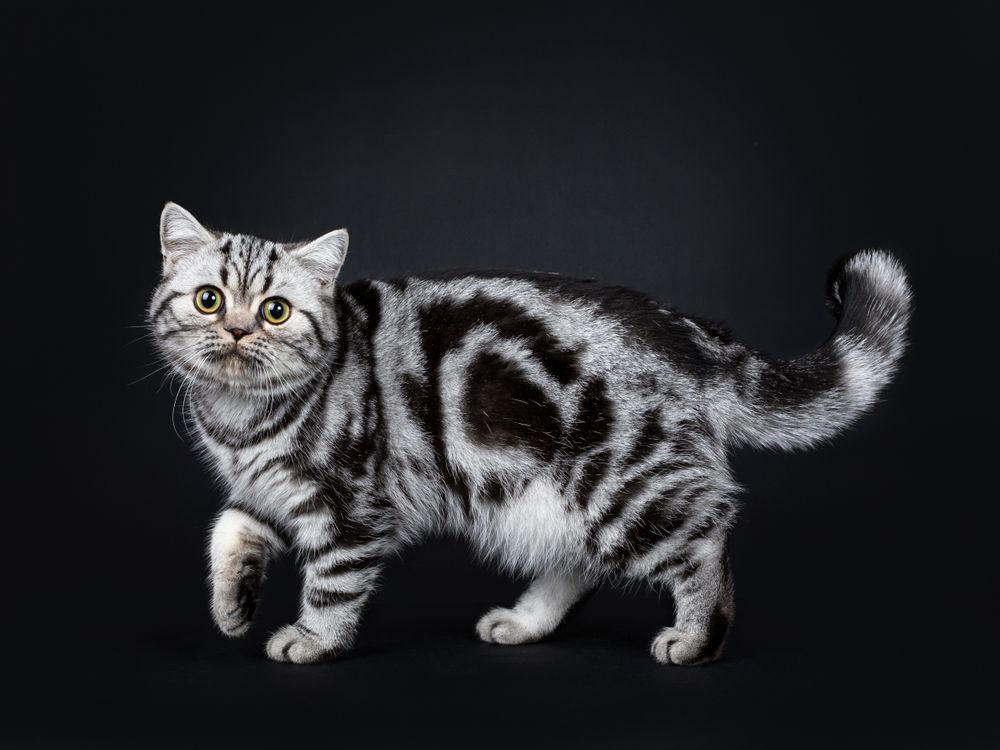
The classic tabby pattern, or blotched tabby, consists of swirls rather than stripes or spots.
The classic tabby pattern is sometimes compared to a marble cake. The colors of the coat create dramatic swirling patterns that are easy to identify.
They’re not clear stripes, spots, or splotches but markings that coil and curl along the cat’s side, back, neck, and legs. For many classic tabbies, the markings can create smudged bullseyes or targets. This type of cat is also sometimes called a “blotched tabby.”
2. Mackerel Tabby

The mackerel tabby pattern resembles tiger stripes
Named after the way the stripes resemble a fish skeleton, the mackerel tabby cat is believed to be the original tabby coat pattern. It is similar to the natural coat of the African wildcat that is a distant ancestor to all of today’s domestic cats.
The mackerel pattern is considered the “default” tabby pattern. Its gene is dominant, and if the world suddenly stopped selectively breeding tabby cats, entire families of cats would revert to the mackerel pattern within a few generations.
Mackerel tabby cats are also sometimes called “tiger cats.” The stripes are usually evenly spaced and run vertically down the cat’s side. There is also a thicker stripe that runs along the cat’s spine.
3. Spotted Tabby
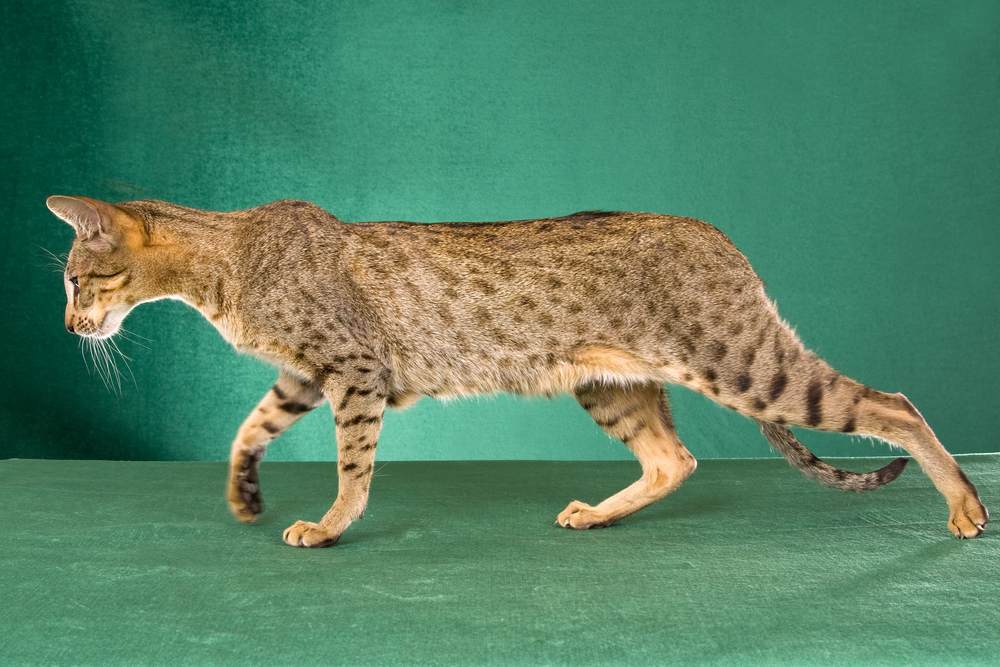
Spotted tabby cats display spots rather than stripes or swirls.
Cats that have spots instead of stripes are also included in the tabby cat category. The spots can be different sizes and cover the cat’s back, neck, and sides.
Unlike the spots of a Dalmatian, a spotted tabby’s spots typically run in an organized line or pattern. These cats can sometimes look like mackerel tabbies with broken stripes.
4. Patched Tabby
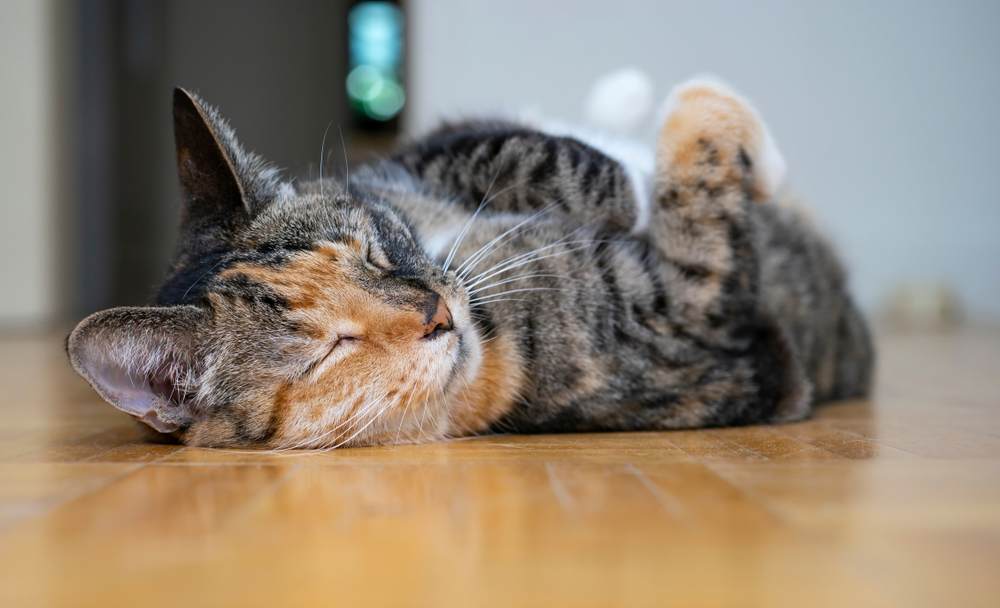
Patched tabby cats have a mix of patches of brown tabby and patches of orange tabby.
A patched tabby cat has colorful patches of fur with the typical tabby markings throughout. Some of these cats are also called “torbies” as they’re a combination of a tabby and tortoiseshell cat.
It’s also possible to have a “caliby,” which is a calico cat that has tabby markings. The patches of color can be any size, but the underlying coat color doesn’t affect the darker pattern of swirls, stripes, or spots.
5. Ticked Tabby
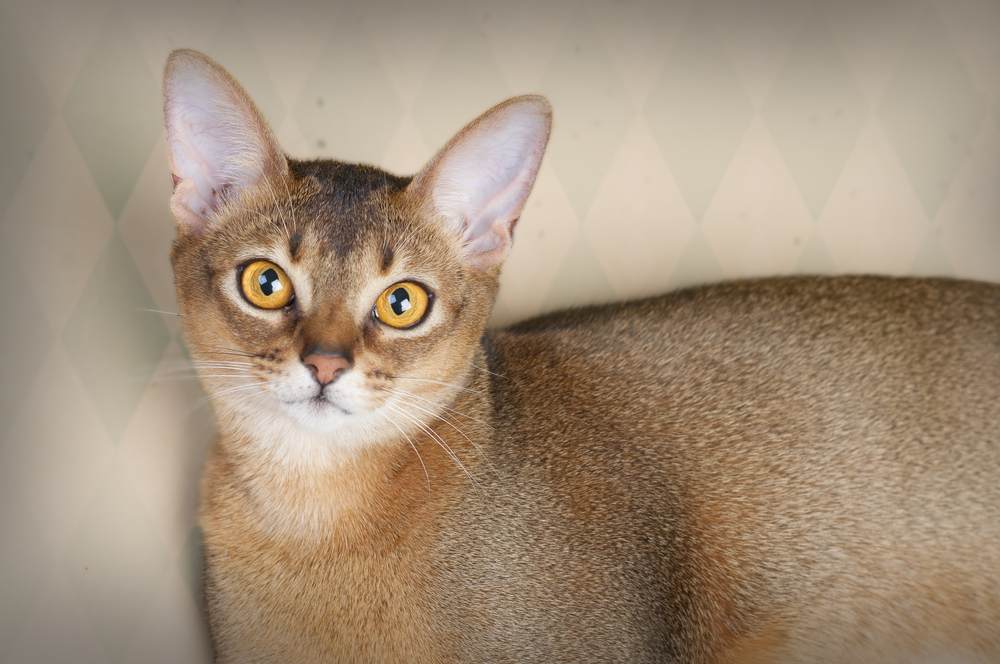
Ticked tabby cats such as this Abyssinian have the tabby M on the forehead and banded hairs of alternating darker and lighter colors (called agouti).
The hardest type of tabby cat to identify is the ticked variety. These cats do not have the tell-tale stripes, swirls, or spots. You’ll still see the “M” on their forward, but the real identifying feature requires a close-up look at the individual strands of fur.
Ticked tabby cats have what are called agouti hairs. This means that each individual strand is striped with alternating light and dark colors. The Abyssinian cat breed is an example of a ticked tabby cat.
Final Thoughts
The tabby pattern is the most common pattern seen in domestic cats. The Maine Coon, British Shorthair, Persian, Egyptian Mau, and American Bobtail are all examples of cat breeds that can be called tabby cats. You also have a good chance of finding a mixed breed tabby cat at a local shelter.
Tabby cats come with all different kinds of personalities, and their striking coat patterns continue to be a favorite among pet people.
Also Read: Tortoiseshell Versus Calico Cats: What’s The Difference Between Them?


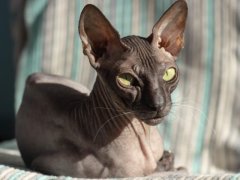


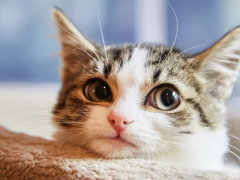


Interesting. There are more patterns than I thought.
The vet who spayed our community cats told me the one that ‘Pearl’ (who is predominantly patched off-white /pale tan(?) but & white, . . . w/ med. grey stripes on her face, lower legs, & tail, + med. grey ears) . . . a ‘muted orange tabby’. Since her stripes are grey, I’ve never understood why he said ‘orange’ rather than ‘grey’ tabby. . . . After reading this article, I’m still wondering! (Was hoping it would include that explanation. Enjoyed reading the rest of it, though! Thanks!)
That is a really interesting question. It sounds to me like Pearl should be considered a grey tabby, and “muted orange” isn’t even an official cat coat color. The term would be “cream”. I think maybe the vet may have simply made a mistake. If she has any orange at all to her coat, she would be perhaps a dilute caliby or what is referred to as a lilac tortie, but it sounds like grey and white tabby is the closest description. This document gives a nice visual guide that you’ll likely find helpful!
I tried to post a closeup pic of the cat I described in my prior post, but it wouldn’t ‘take’. I had a cat like this growing up. Always thought of it as a Siamese-tabby, & looked up ‘muted tabby’ right after posting prior . . . saw one that looked like Pearl, then searched for ‘muted Siamese tabby’ . . . only to see a page of photos of cats like that looking back at me! . . . I still don’t understand why a vet would think a cat with grey stripes was an orange tabby, though! LOL
Ahhh, that explains a lot! Thank you for the followup. It sounds like Pearl is a lynx point cat, then. There’s a nice article on this coat pattern published on TheCatSite. https://thecatsite.com/c/lynx-point-siamese/
Do you have any Siamese cats or bangle or Maine coon kittens available?
Corina, we don’t sell or adopt out cats. I would recommend looking for breeders in your area.